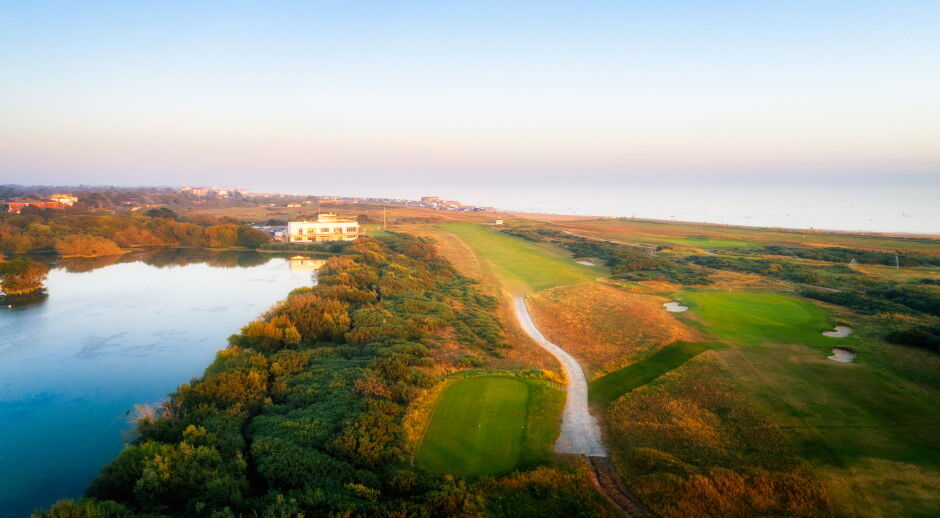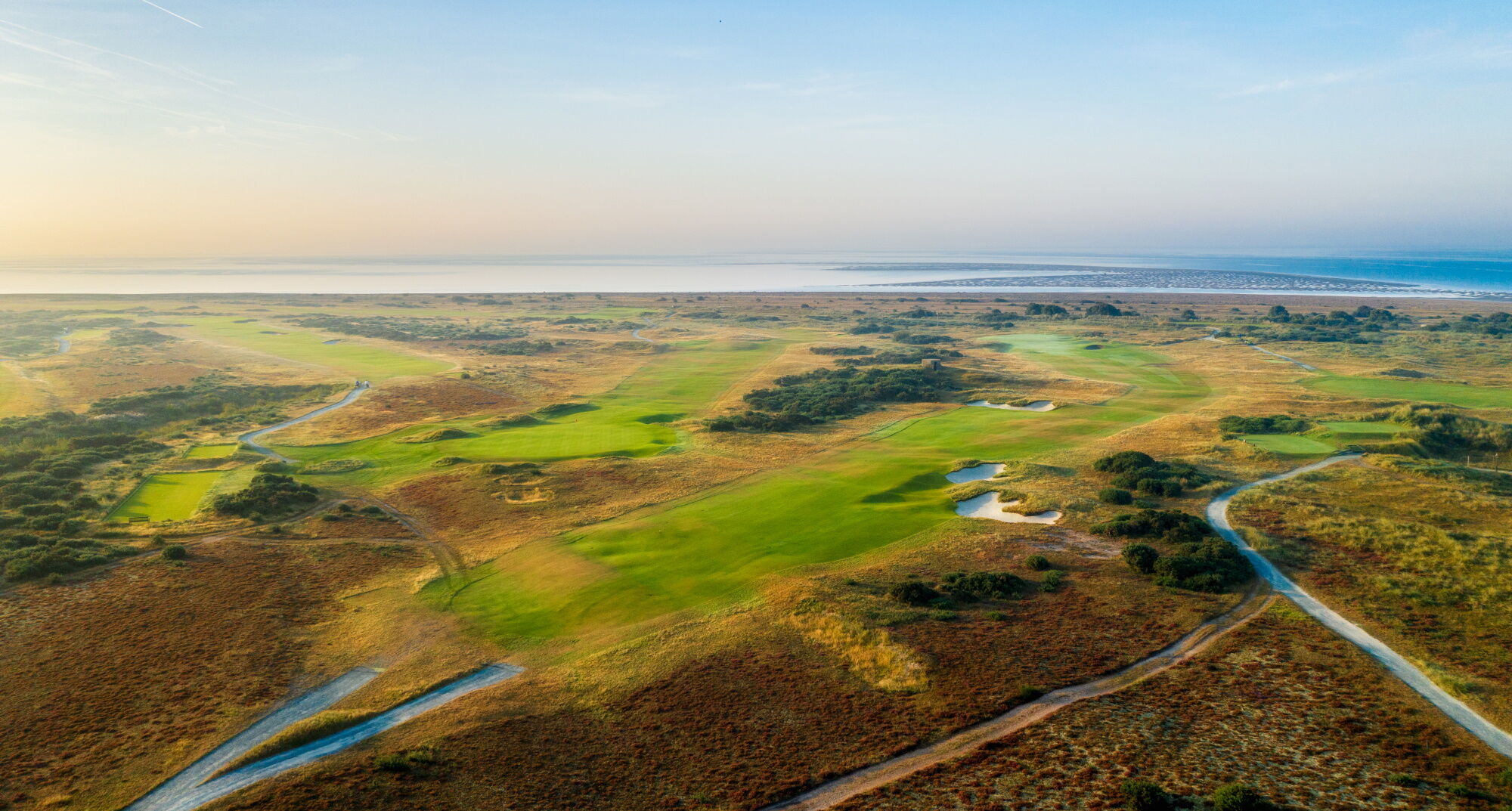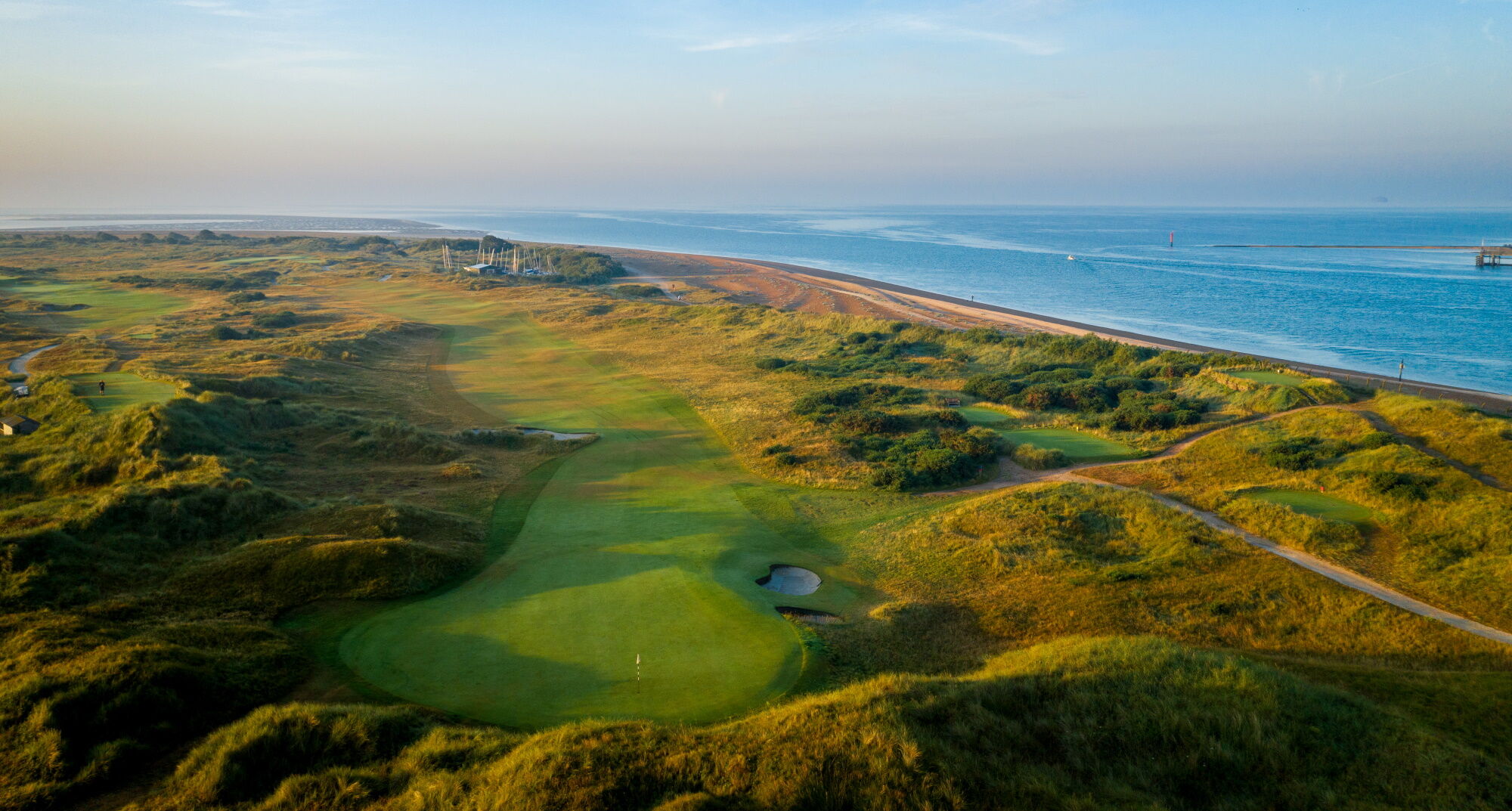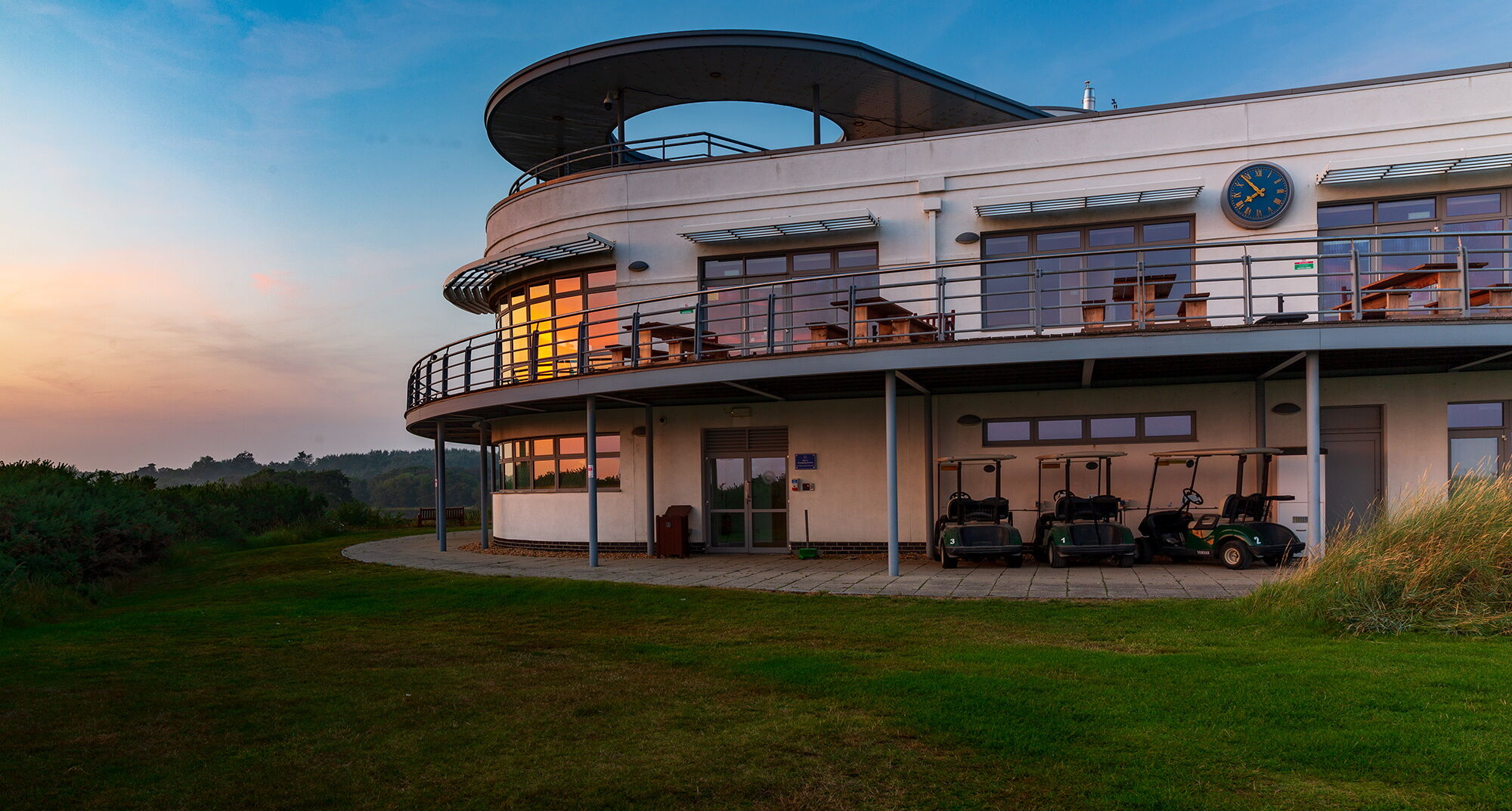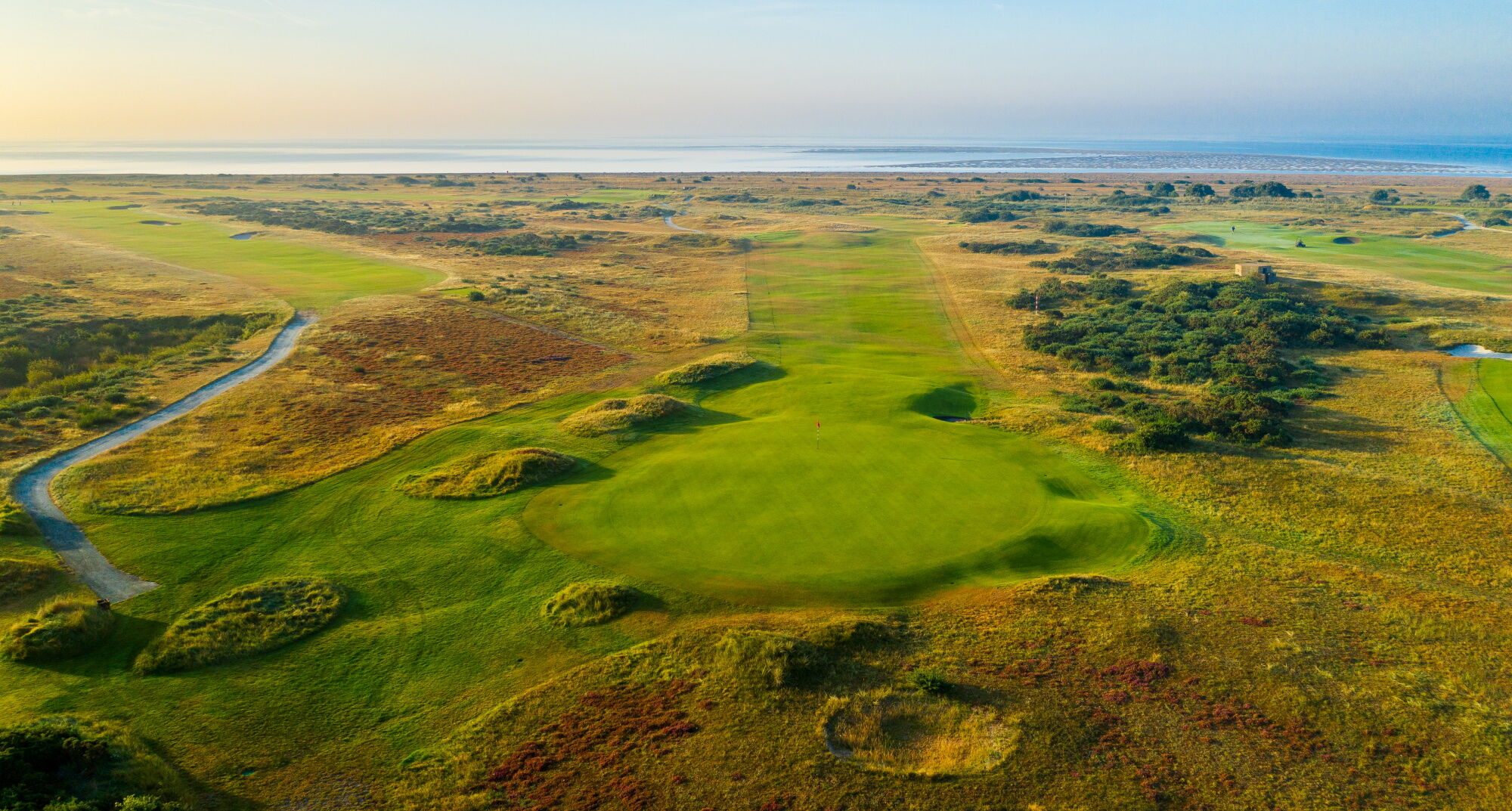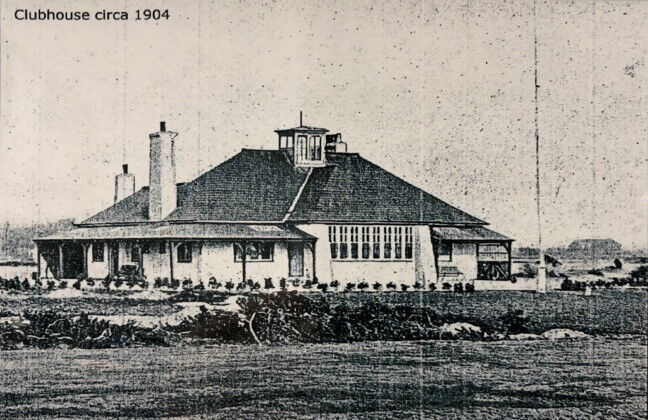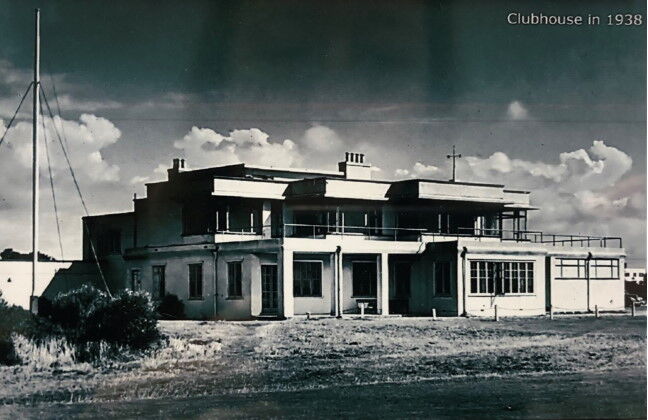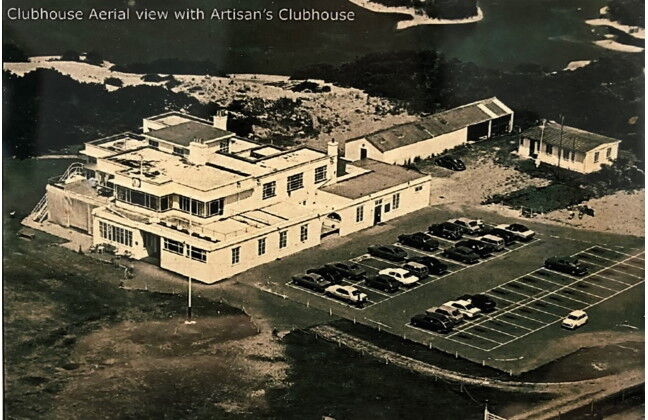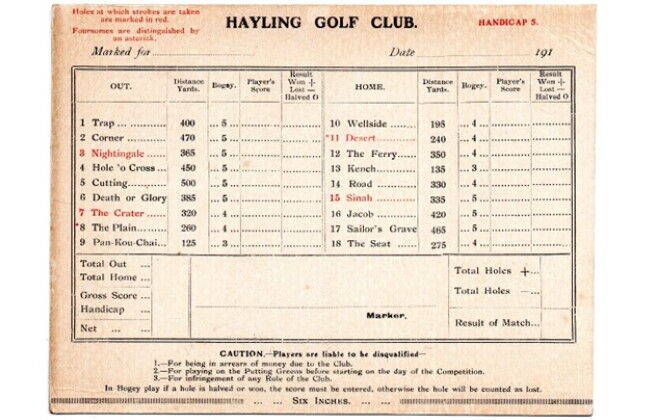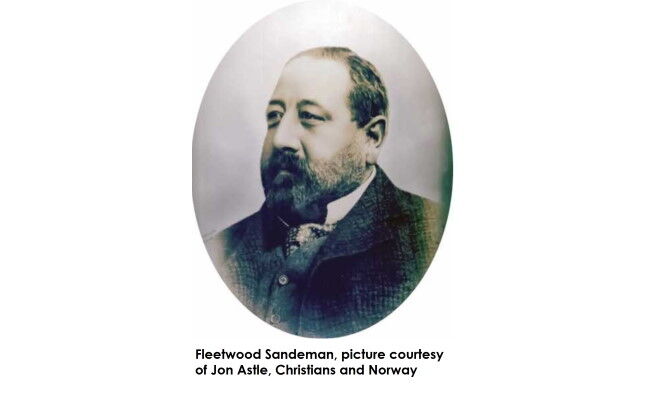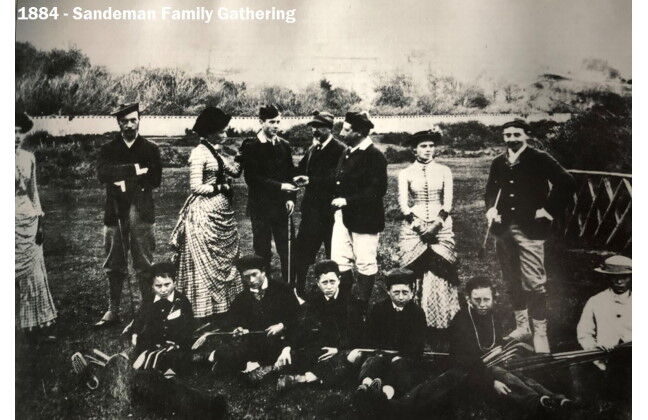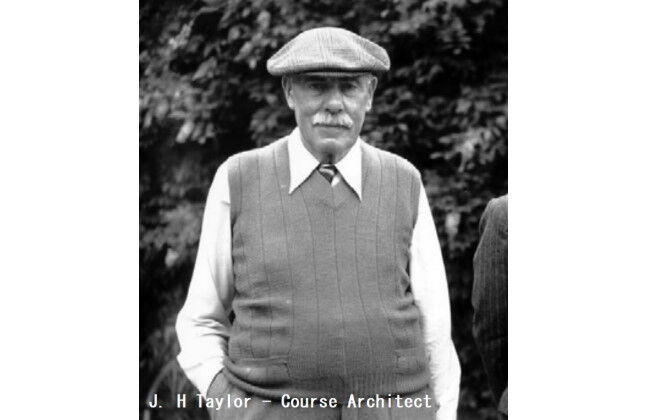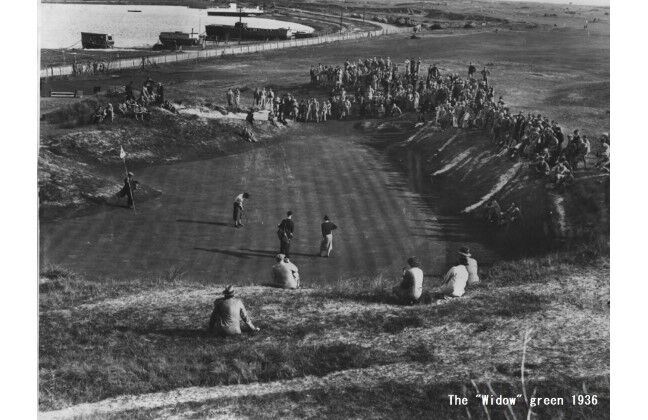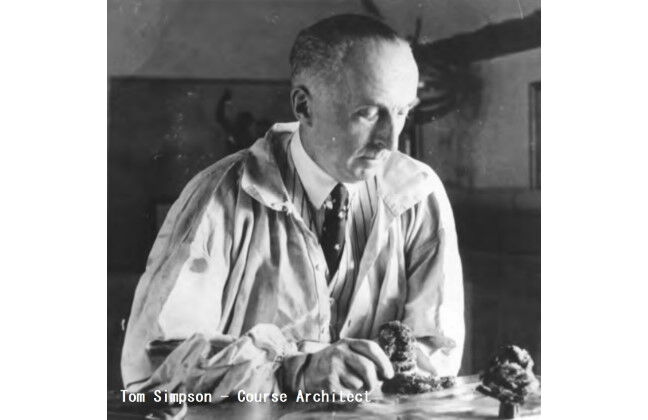Beginnings
Club History
In 1883 South Hayling was described as a "˜parish watering place', a village with a branch line from Havant, five miles East of Portsmouth'; a connection that supported Investments for developing the island into a salubrious vacation destination for wealthy family holiday residences. One of those being the Sandeman family, famous for their port and sherry business.
One of the Sandeman brothers, Fleetwood Sandeman, had been introduced to golf through his friendship with the Rev J Cumming Macdona, who was a member at Hoylake and Pau in France. Macdona announced in The Field magazine in 1880 that Fleetwood Sandeman Intended to form a new golf course on Hayling Island.
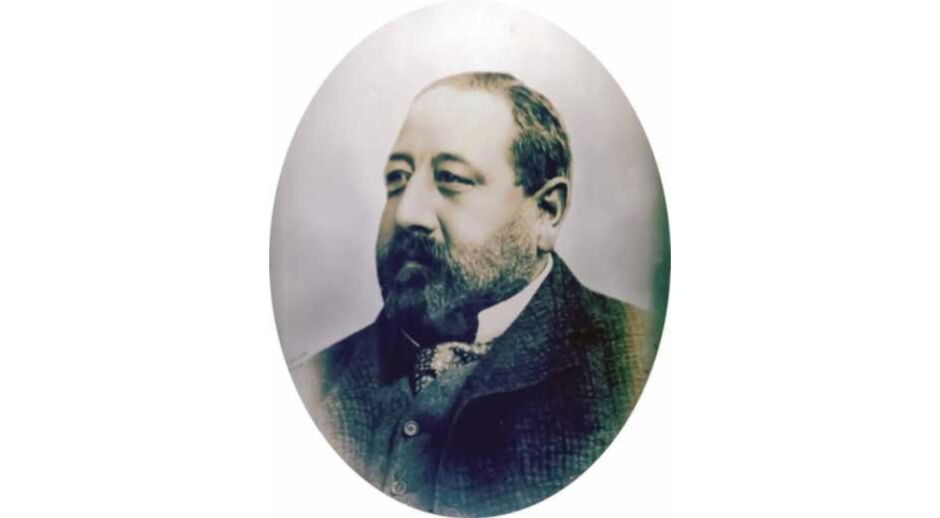
Fleetwood
Sandeman
It was not until August 3rd 1883 that Hayling Island Golfing Club was formally inaugurated at a meeting in Whin Hurst, South Hayling, the home of John Glas Sandeman, and presided over by Macdona who had travelled from Cheshire especially for the meeting. Fleetwood was elected Captain and his brother John Glas as Treasurer.
The committee engaged a professional "˜The General' Joe Lloyd from Hoylake, (he later won the US Open in 1897), who helped lay out the first 9 holes on Beach Common.
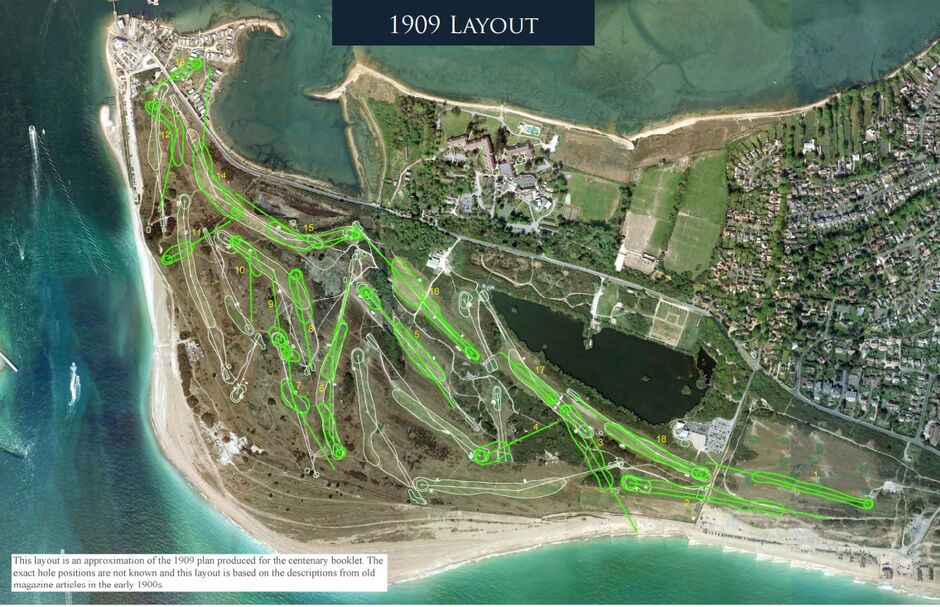
A year later a full 18 holes were realised when leases on Sinah Common allowed the course to be extended west. At that time the committee also formed Hayling Island Ladies Golf Club and appointed John Glas's daughters Maud as Lady Captain and Ella as Secretary/ Treasurer.
The club negotiated a long lease on Sinah Common in 1897, and it was then decided to build a clubhouse at a cost of £1000. It was eventually built in 1899 where it stayed for over 100 years.
In 1902 an exhibition match was held between Harry Vardon and James Braid and soon afterwards, in 1905, their contemporary, J H Taylor, was commissioned to advise on course alterations for a Fee of £11.
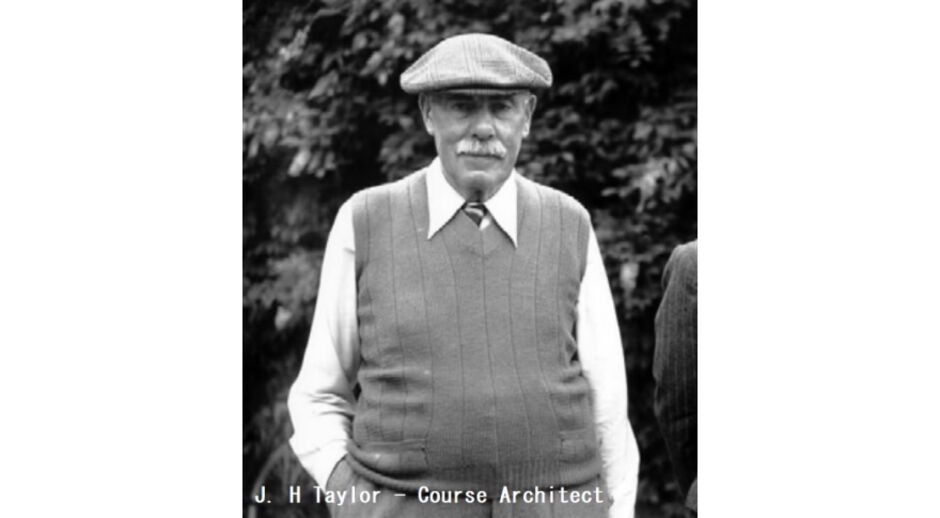
As with most courses of Hayling's age, the course is not the work of one man's hand. Certainly, much of Hayling bears the hallmark of Tom Simpson who was one of the great English architects of the 1920s and 1930s, but by no means all of the holes are his exclusively.
Tom Dunn laid out the original holes at Hayling. He was one of the early professionals to design courses as the game developed and moved to inland sites where the terrain lacked the features of the great links with which he was familiar. His courses typically featured cross hazards that were square to the line of play and often across teeshots. He was a prolific designer, with 137 layouts attributed to him, while also being a busy teaching professional.

Shortly after Dunn's death in 1905, further course visits from Harry Colt (1919) saw changes, then the Club asked J.H. Taylor, the 5-time Open Champion, who was in his prime at that time, to make suggestions on the design of the course (1927).
The Club finally bought the freehold for the land after WWI and although grand plans for major course development were drawn up, little work was actually done until the 1930s.
The Club and course became very popular and word started to spread. The 9th of December 1921 was a landmark day when the great Bernard Darwin of The Times reported on his first visit. His piece was written at around the time that the likes of Harry Colt and Tom Simpson were starting to design holes that incorporated diagonal hazards rather than the full frontal attack over perpendicular cross hazards, whether they were dunes or bunkers as had been the case in the 1890s when Tom Dunn first created the course.
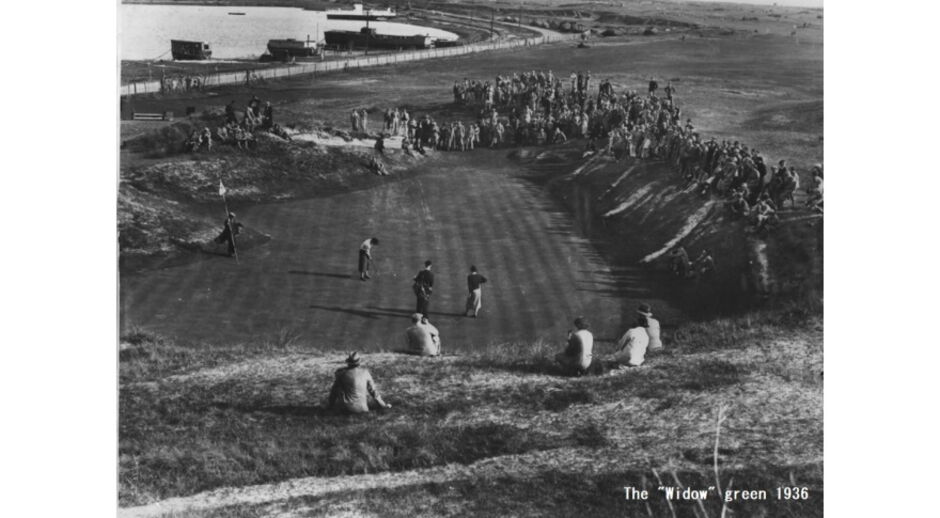
During the "˜golden era' of golf course design in the 1920's Tom Simpson was part of the firm Fowler, Abercomby, Simpson & Croome, one of the most respected golf architecture and design firms of the time. Simpson & Co. was established in 1931, working within the era of cerebral and artistic golf design. He was engaged on two occasions, in the 1930's when extra holes were required due to leases on the beach and the Kench and to advise on bunkering. And in 1946 after the war, to rectify damage as a result of combined forces attacks in the area. His impact on the course at Hayling can still be seen on 3rd,5th, 9th, 10th, 12th, 13th and 14th holes. Hayling came to be Simpson's las design in the UK, a course he had great affection for.
World War II halted progress on the course and the RAF took control of the land west of the 7th for air defences. Concrete bunkers and Nissan huts were erected on the area of the 13th green and 14th tees.

Coastal defences were also built all along the beach and it was reported that at the end of the war, there was up to 10 feet of blown sand on the "Widow" hole which had been completely abandoned. In 1947, Simpson was reappointed to restore the course and left his enduring mark when his changes in 1932 and after the war in 1946 made the course very much as it is today.
The renowned golf writer Bernard Darwin wrote, after playing the course, that "˜it possesses some of the finest natural seaside golfing country to be found anywhere. In 1938 the secretary Mr A P Patey commenced a programme of shingle extraction with the Hayling Coal and Transport Co. which created the lake near the clubhouse, provided a steady income stream, and more importantly a new source of water for the course.

The course has hosted many championship competitions over the years in particular the English Ladies Closed Championships in 1936, 1948, and 1966.
It hosted its most recent Championship event in 2021, the "˜English Senior Women's Strokeplay Championships' and continued to attract golfers from far and wide, to experience the historic, unique and beautiful links.